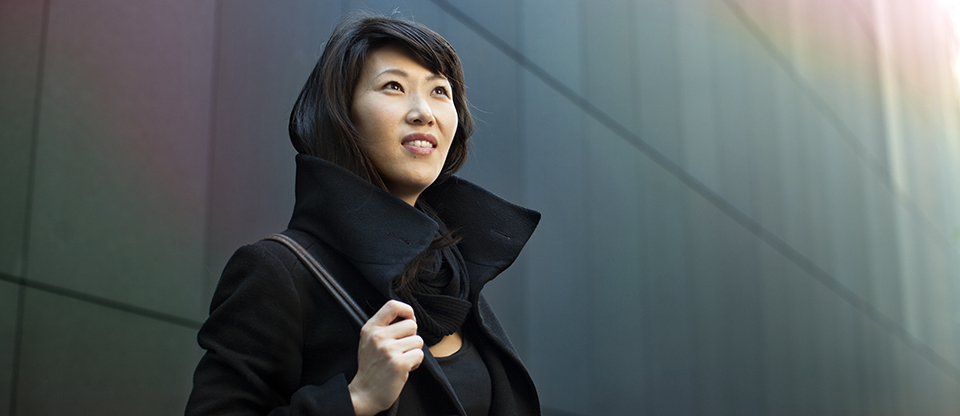
Graduating in 2013
Mia Kang ’13 thrives on the undiscovered and delights in thinking otherwise.
A graduate student in the College of Architecture, Art, and Planning (AAP), Kang begins each new project by asking herself: “How do I go about creating something I don’t already know?”
After completing undergraduate degrees in sculpture and biology and a master’s degree in interior design, teaching at the Pratt Institute for two years, traveling abroad, and practicing in the professional world of architecture, Kang combined her experiences and focused her creative and formulaic energies on experimenting with and studying the built environment. Human experience, she explains, is an important component in architectural design.
Starting small
“I start with a small idea of what the project is and then this idea grows into a larger-scale element, and then from that, the human factor gets embedded,” she says. “My artistic background helps me create a beautiful space or environment not just for function, but where an individual can feel a certain emotion.”
Kang recalls one of her earlier semesters in AAP as the most influential. Working in Assistant Professor Jenny Sabin’s studio, she began developing a bottom-up ideology and experimenting with process. Instead of teaching her to work toward a finished vision in a global sense, Sabin taught her that the process itself could lead her to see things she never imagined.
“I’ve never experienced a process like that before because architecture is always viewed globally, and the way Jenny Sabin approached it was the other way around,” Kang says.
The project direction was to develop a bathhouse. Rather than looking at the project overall, Kang started with the simplest element: the movement and behavior of water.
“That part was extremely rigorous. I had to do intensive research and experimentation, not just within our department, but in the scientific world. From there, I took one element and translated that into a visual form.”
It is this opportunity to experiment that Kang appreciates so much about academia, especially with the faculty support system Cornell provides. Faculty help her develop projects from point A to B—and to points C and D and back to B again. It is about the process of going forward and backward and asking questions along the way.
Experiment and experience
“Every semester I can try something outrageous. They never say ‘no,’” she says. “Instead, they always say: ‘What if we do this, what if we do that, let’s try this, or let’s try that.’ It’s not that the faculty let you experiment, it’s the fact that they are equally excited about where the idea might go.”
Kang says her time at Cornell has been about finding herself rather than following the direction of an already defined program.
She believes her life, too, has been all about process. She never could have predicted past experiences would bring her to where she is today.
“At this point I don’t know how to separate them . . . I know that they made me who I am now and shaped the way I think about certain things,” she says. “It’s just meant to be.”
This semester Kang is participating in AAP’s New York City program. She enjoys being back in the city, she says. It is where she completed her first graduate degree, where she worked as a visiting assistant professor, and where she spent time with an architectural design firm.
In the past, she worked as an interior design lead for a multi-residential property on the Upper East Side and developed plans for an entrance and gathering area in a Brooklyn building. She also proposed an idea for The Harlem Edge/Cultivating Connections competition through Emerging New York Architects, which incorporated landscape and tidal patterns and an idea for providing fresh produce to low-income areas. Her work on the last project has been on exhibit at the Center for Architecture, home to the New York chapter of the American Institute of Architects.
And she’s not finished yet. Kang wants to spend her remaining year at Cornell by seeing how far she can push her own designs. After she graduates in December 2013, she intends to continue learning and see where life takes her.
“I don’t consider architecture as a job at all—it’s too late to think that. It’s just me. It’s who I am,” she says. “Hopefully I’ll do some really great work. If I can live this life and design one amazing project or building that moves people, I think my purpose will be fulfilled.”
Kang looks toward the future with optimism.
“I just know that I’m me . . . I’m Mia,” she says. “And I have to just keep pushing forward.”





